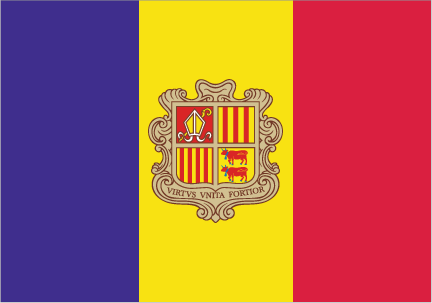
Tourism, retail sales, and finance are the mainstays of Andorra's tiny, well-to-do economy, accounting for more than three-quarters of GDP. Andorra's duty-free status for some products and its summer and winter resorts attract millions of visitors annually, although the economic downturn in neighboring countries has curtailed the number of tourists. Andorra's comparative advantage as a tax haven eroded when the borders of neighboring France and Spain opened; its bank secrecy laws have been relaxed under pressure from the EU and OECD. Agricultural production is limited - only 5% of the land is arable - and most food has to be imported, making the economy vulnerable to changes in fuel and food prices. The principal livestock is sheep. Manufacturing output and exports consist mainly of perfumes and cosmetic products, products of the printing industry, electrical machinery and equipment, clothing, tobacco products, and furniture. Andorra is a member of the EU Customs Union and is treated as an EU member for trade in manufactured goods (no tariffs) and as a non-EU member for agricultural products. Andorra uses the euro and is effectively subject to the monetary policy of the European Central Bank. Slower growth in Spain and France has dimmed Andorra's economic prospects. Since 2010, a drop in tourism contributed to a contraction in GDP and a sharp deterioration of public finances, prompting the government to begin implementing several austerity measures to reduce the budget deficit, including levying a special corporate tax. To bring in new revenue and diversify future sources of economic growth, the government approved in July 2012 a new foreign investment law opening investment to foreign capital.
$3.163 billion (2012 est.)
country comparison to the world: 180
$3.214 billion (2011 est.)
$3.227 billion (2010 est.)
-1.6% (2012 est.)
country comparison to the world: 210
-0.4% (2011 est.)
-1.9% (2010 est.)
$37,200 (2011 est.)
country comparison to the world: 35
$37,700 (2010 est.)
$37,900 (2009 est.)
agriculture: 14%
industry: 79%
services: 6% (2011 est.)
NA% (2008)
1.1% (2012 est.)
country comparison to the world: 29
-2.5% (2011 est.)
36,060 (2012)
country comparison to the world: 201
agriculture: 0.4%
industry: 4.7%
services: 94.9% (2010)
4% (2012 est.)
country comparison to the world: 30 1.9% (2011 est.)
tourism (particularly skiing), banking, timber, furniture
NA%